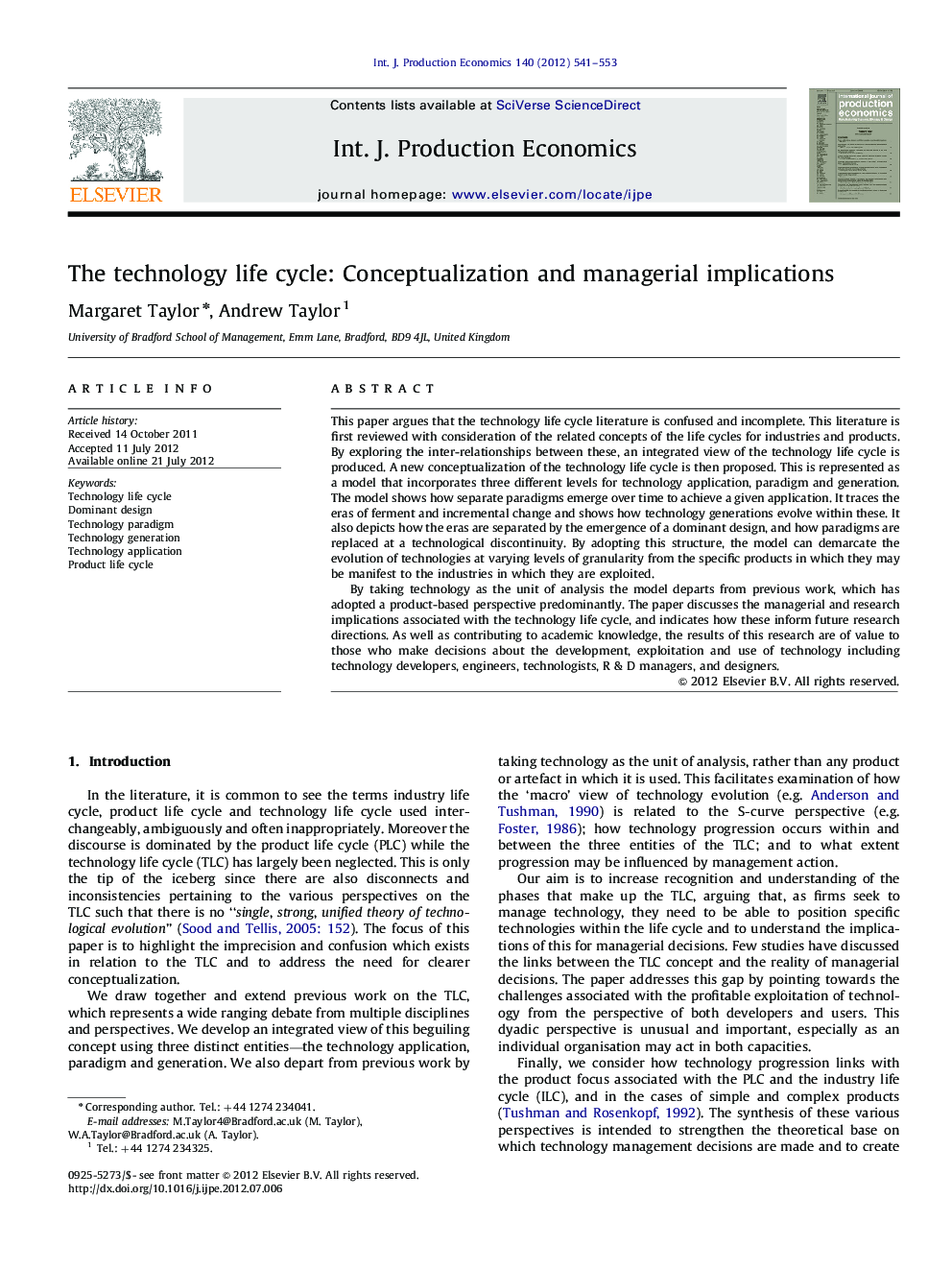| کد مقاله | کد نشریه | سال انتشار | مقاله انگلیسی | نسخه تمام متن |
|---|---|---|---|---|
| 5080843 | 1477581 | 2012 | 13 صفحه PDF | دانلود رایگان |
عنوان انگلیسی مقاله ISI
The technology life cycle: Conceptualization and managerial implications
ترجمه فارسی عنوان
چرخه عمر فناوری : مفهوم سازی و الزامات مدیریتی
همین الان دانلود کنید
دانلود مقاله ISI انگلیسی
رایگان برای ایرانیان
کلمات کلیدی
طراحی غالب - الگوی فن آوری - نسل تکنولوژی - کاربرد فناوری - چرخه عمر محصول - چرخه عمر تکنولوژی - چرخه عمر فناوری
فهرست مطالب مقاله
چکیده
1. مقدمه
2- پیشینه تحقیق چرخه حیات
3- چرخه حیات فناوری
3-1- دیدگاه کلان
3-2- منحنی S
3-3- دیدگاه های جایگزین چرخه عمر تکنولوژی (TLC)
4- بحث و بررسی
4-1- کاربرد، الگوها و تولیدات چرخه عمر تکنولوژی (TLC)
4-2- مدل سازی و تلفیق چرخه عمر تکنولوژی (TLC)
4-3- چرخه عمر تکنولوژی (TLC) – پیوند با دیدگاه های مبتنی بر محصول در پیشرفت فناوری
5- مفهوم سازی چرخه حیات فناوری
6- تلویحاتی برای تحقیق و فعالیت
7. نتیجه گیری
ترجمه چکیده
این مقاله اثبات می کند که پیشینه تحقیق چرخه ی حیات فناوری نامنظم و ناقص است. این پیشینه تحقیق در ابتدا بر روی بررسی ارتباط بین مفاهیم چرخه های حیات برای صنایع و محصولات مروری دارد. با کشف ارتباطات داخلی بین این ها، یک دیدگاه جامع از چرخه ی حیات فناوری ایجاد شده است. سپس مفهوم سازی جدیدی از چرخه ی حیات فناوری پیشنهاد می شود. این مفهوم به صورت مدلی که سه سطح متفاوت کاربرد فناوری، الگو و تولید ترکیب می کند، ارائه می شود. این مدل نشان می دهد که چطور الگوهای جداگانه در طول زمان برای دستیابی به یک کاربرد مشخص پدیدار می شوند. این مدل دوران انگیزش و تغییر تدریجی را دنبال می کند و نشان می دهد که چطور تولیدات فناوری از این ها به وجود می آیند
موضوعات مرتبط
مهندسی و علوم پایه
سایر رشته های مهندسی
مهندسی صنعتی و تولید
چکیده انگلیسی
This paper argues that the technology life cycle literature is confused and incomplete. This literature is first reviewed with consideration of the related concepts of the life cycles for industries and products. By exploring the inter-relationships between these, an integrated view of the technology life cycle is produced. A new conceptualization of the technology life cycle is then proposed. This is represented as a model that incorporates three different levels for technology application, paradigm and generation. The model shows how separate paradigms emerge over time to achieve a given application. It traces the eras of ferment and incremental change and shows how technology generations evolve within these. It also depicts how the eras are separated by the emergence of a dominant design, and how paradigms are replaced at a technological discontinuity. By adopting this structure, the model can demarcate the evolution of technologies at varying levels of granularity from the specific products in which they may be manifest to the industries in which they are exploited. By taking technology as the unit of analysis the model departs from previous work, which has adopted a product-based perspective predominantly. The paper discusses the managerial and research implications associated with the technology life cycle, and indicates how these inform future research directions. As well as contributing to academic knowledge, the results of this research are of value to those who make decisions about the development, exploitation and use of technology including technology developers, engineers, technologists, R & D managers, and designers.
ناشر
Database: Elsevier - ScienceDirect (ساینس دایرکت)
Journal: International Journal of Production Economics - Volume 140, Issue 1, November 2012, Pages 541–553
Journal: International Journal of Production Economics - Volume 140, Issue 1, November 2012, Pages 541–553
